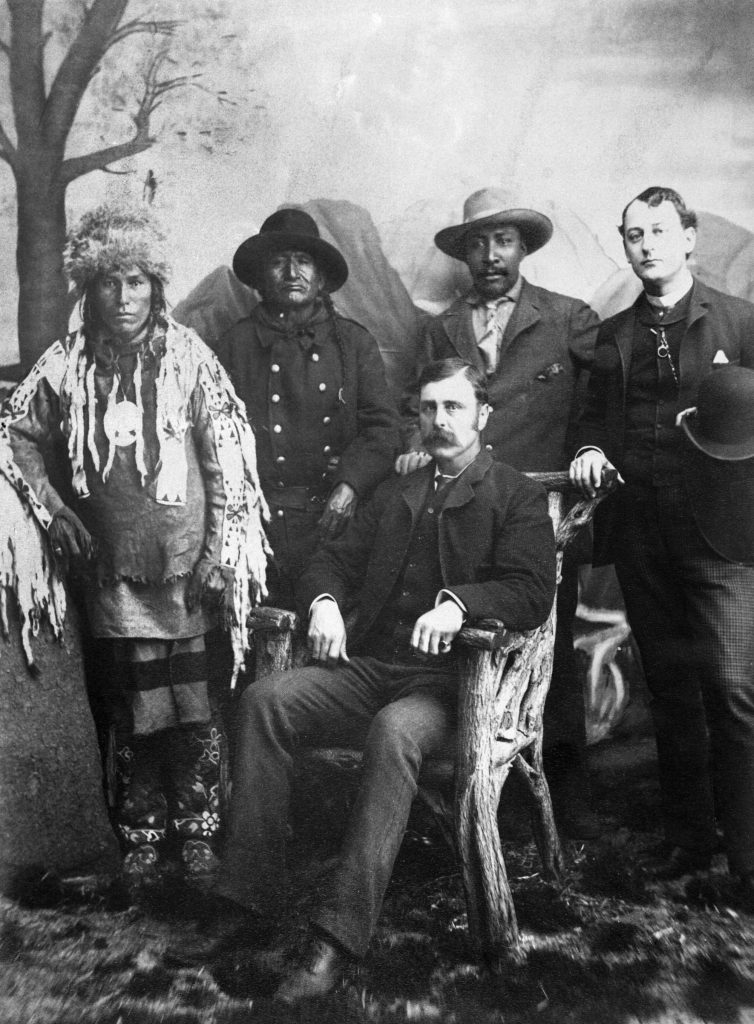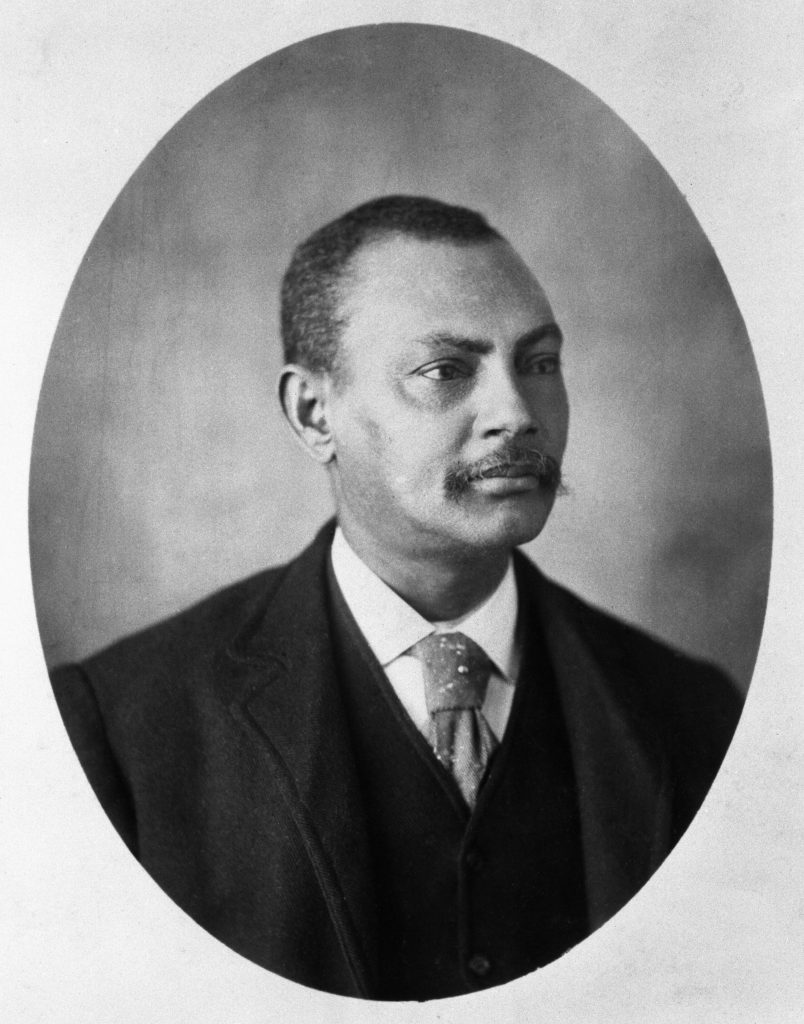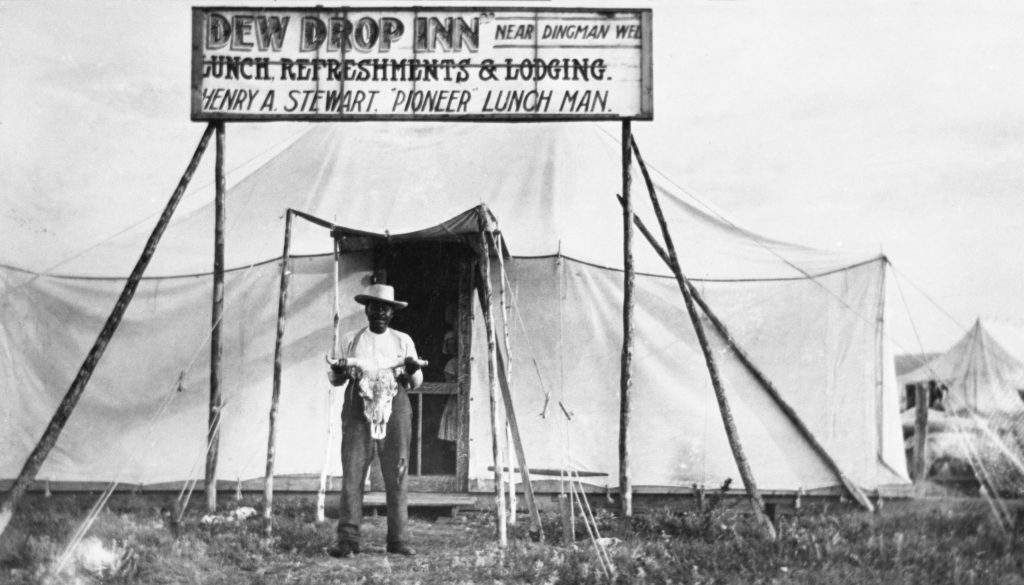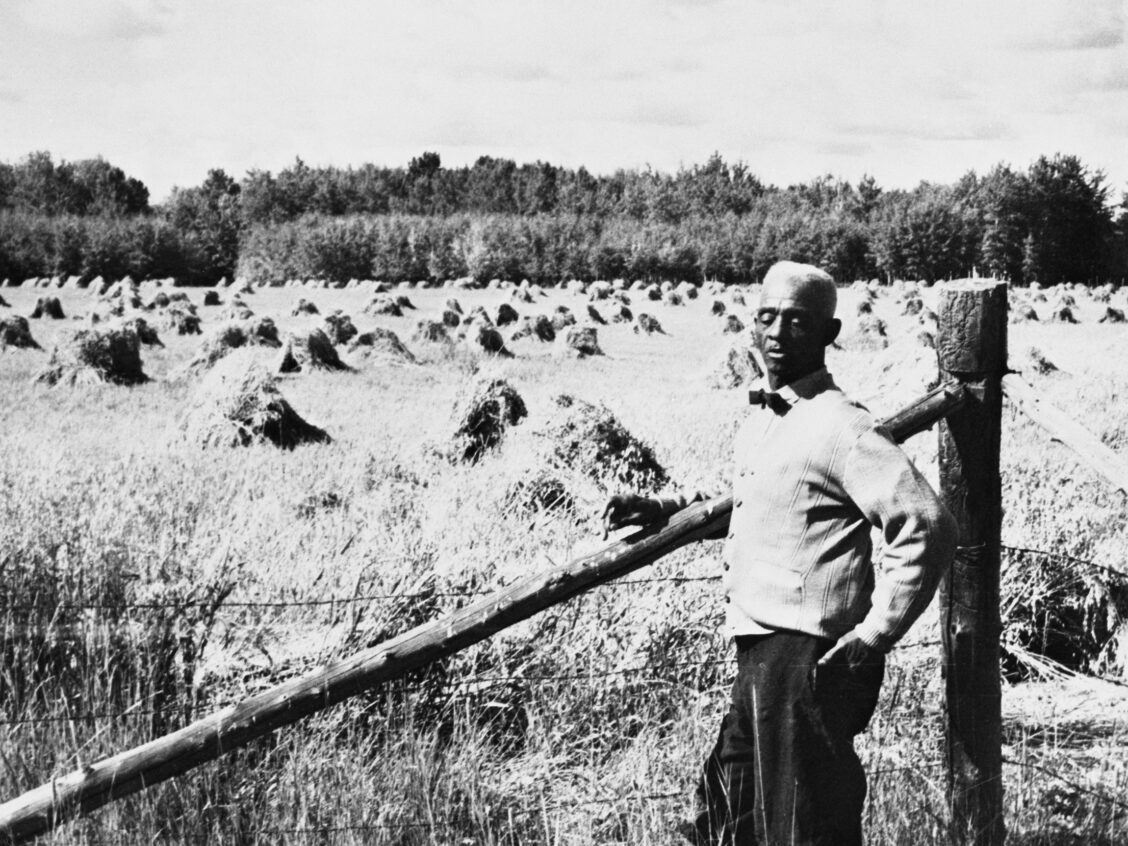Initially, Black Canadians made their way to the North-West Territories as individual pioneers or accompanying traders. Most were attempting to make a living from the fur trade and found employment with companies such as the Hudson’s Bay Company.
Life at the various forts and early settlements in the North-West Territories (later known as Alberta) reveals the existence of several Black individuals and families who had arrived on Indigenous land for work. Arrival in the Northwest was part of a broader political project of resource extraction, displacing Indigenous groups from their land, and creating a white settler society. Often the work was based on hunting and trapping alongside developing dominance in working relationships with existing Indigenous communities.
For our specific time period Black people who arrived at the turn of the 20th century gained work related to the ongoing changing use of Indigenous land into cities, towns, farms and ranches.

Image courtesy of Glenbow Archives, Archives and Special Collections, University of Calgary, NA-262-1.
One of the earliest families in the southern Alberta area was the Lewis family who arrived in 1889. Daniel, Charlotte, and their children lived in Vulcan in 1903. Daniel was a carpenter by trade and Baptist by religion. He was born in the United States and lived in Ontario before moving out to the North-West Territories. Charlotte was born in Nova Scotia.
Archival photographs from this time indicate ordinary yet extraordinary lives.
David Mills was born April 13, 1855, to Black American Henry Mills and his Kainai wife Phillis. Henry Mills had come to the North-West Territories to work in the fur trade.
David lived in both Indigenous and white societies. He learned English from his father and Blackfoot from his mother’s family. He was given the name of pikanistum’ik.
In 1880, the then Indian Agent appointed Mills as an interpreter in what is now Southern Alberta.
Pictured from left to right: One Spot, Minor Chief; Red Crow, Head Chief; David Mills, Interpreter; E.R. Cowan, Clerk. Seated is William Pocklington, Indian Agent. 1886. Image courtesy of Glenbow Archives, Archives and Special Collections, University of Calgary, NA 769-6.

Watch
A short interview with Dr. Jennifer Kelly (Professor Emeritus, University of Alberta), about David Mills.

Annie Saunders was a nanny to the children of North West Mounted Police Colonel James Macleod.
Annie was born in the United States in approximately 1836. She began working for the Macleod family in 1877 at Fort Macleod. In the 1881 census, her occupation was listed as a “cook” in the Bow River area.
Image courtesy of Glenbow Archives, Archives and Special Collections, University of Calgary, NA 742-3.
The Lewis’ daughter, Mildred, married rancher John Ware in 1892. Ware had migrated to Alberta from the United States.
John Ware is perhaps the most well-known early pioneer of African descent. He is credited with bringing steer roping to Alberta and facilitating an early version of the Calgary Stampede.
John & Mildred Ware and their children, Robert Ware (L) and Nettie Ware (R), circa 1896. Image courtesy of Glenbow Archives, Archives and Special Collections, University of Calgary. NWMP Col. James McLeod NA-263-1.


Other individuals included George Williams, a Jamaican who was credited with being a cobbler and amateur photographer. Described as well-liked, he died in 1903 at Innisfail.
George Williams, circa 1900. Image courtesy of Glenbow Archives, Archives and Special Collections, University of Calgary, NA-103-18.
Tom Spencer was a trapper & labourer who lived in Millarville.
Circa 1910s. Image courtesy of Glenbow Archives, Archives and Special Collections, University of Calgary, NA-2333-7.


Families who were living and working during these early days included the Darby family, who lived in Vulcan in Southern Alberta.
Mary, sister of Mildred Ware, married Mr. William Darby who worked as a cook at the local Imperial Hotel. Mary is pictured here with her husband William, her three children, and her sister Alberta Lewis.
The image illustrates middle-class respectability in dress and aspirations.
From left to right Dick Darby, William Herbert Darby, Mary (Lewis) Darby, Alberta Lewis (Mary’s sister), Lou Darby, Eva Darby circa 1912. Image courtesy of Glenbow Archives, Archives and Special Collections, University of Calgary, NA-748-83.
Watch
A short interview with Dr. Kelly, (Professor Emeritus, University of Alberta), about the Lewis and Darby families.
Henry Stewart at the Dew Drop Inn in Turner Valley, circa 1914-1917. Henry arrived in 1889 and, according to the census, owned his business.
Image courtesy of Glenbow Archives, Archives and Special Collections, University of Calgary, NA-5262-119.

Guiding questions
- Do these archival photos of early Black arrivals challenge your perceptions of Alberta’s history? Do they affirm your understandings? What surprised you?

